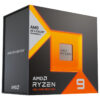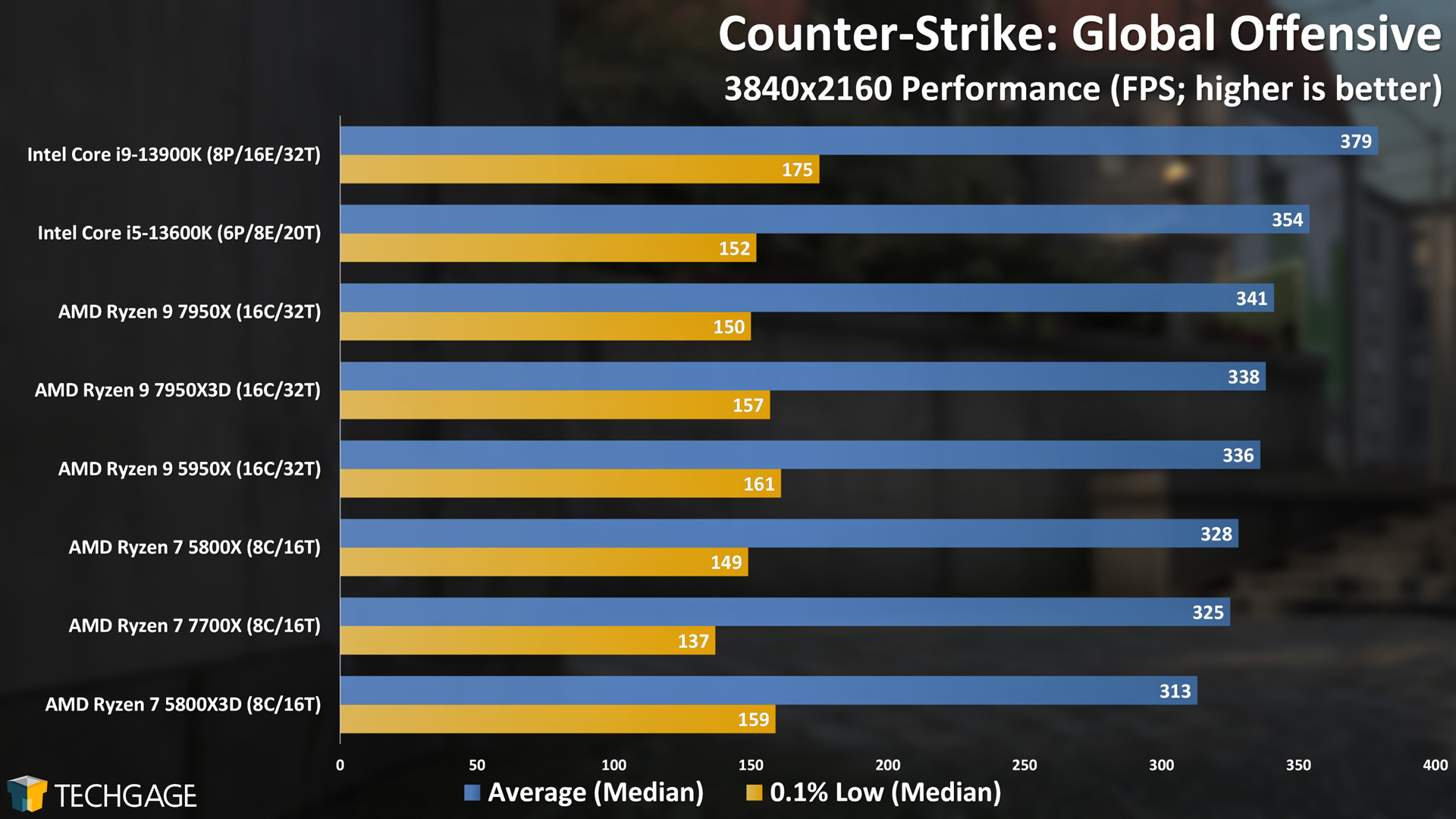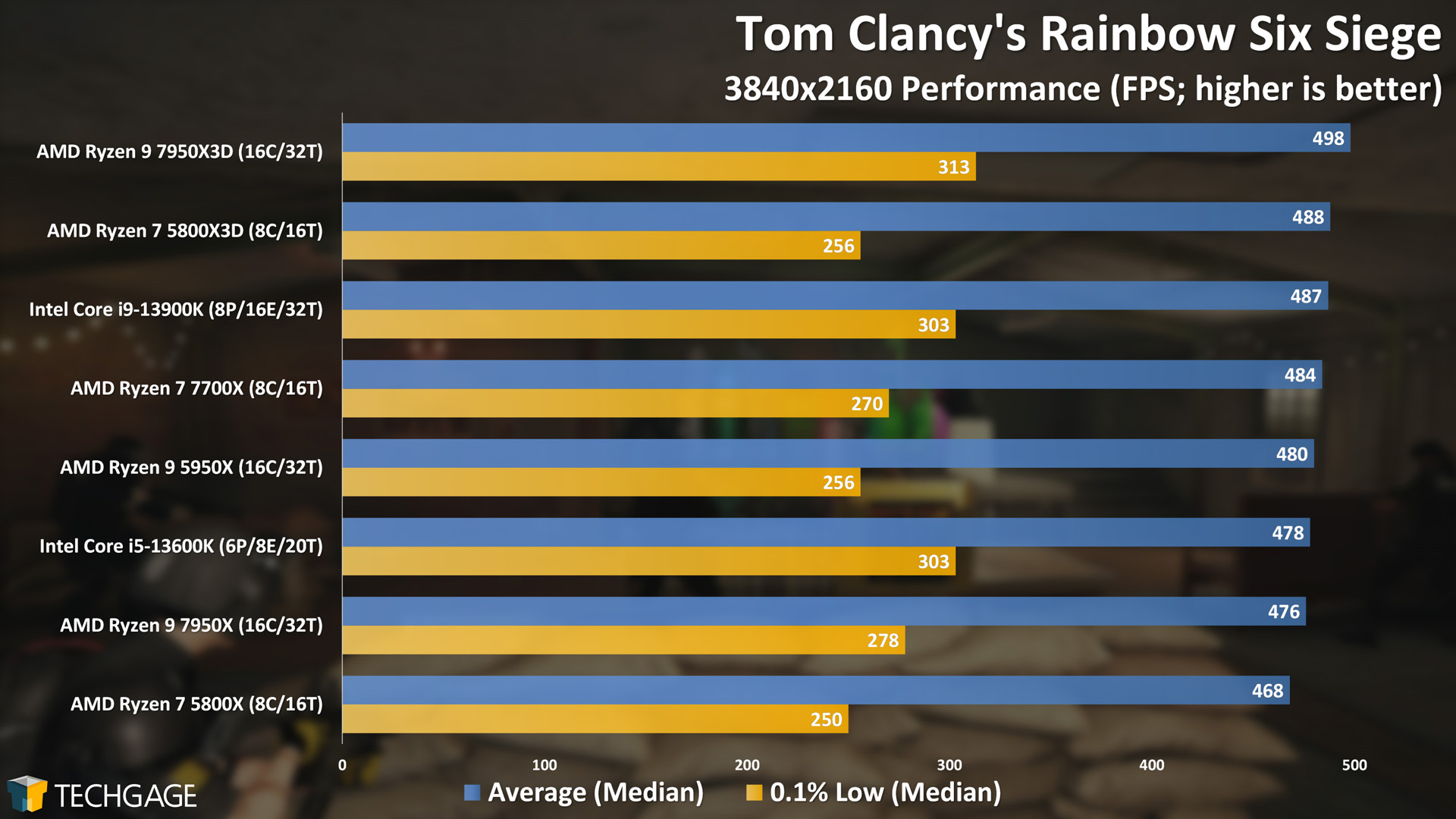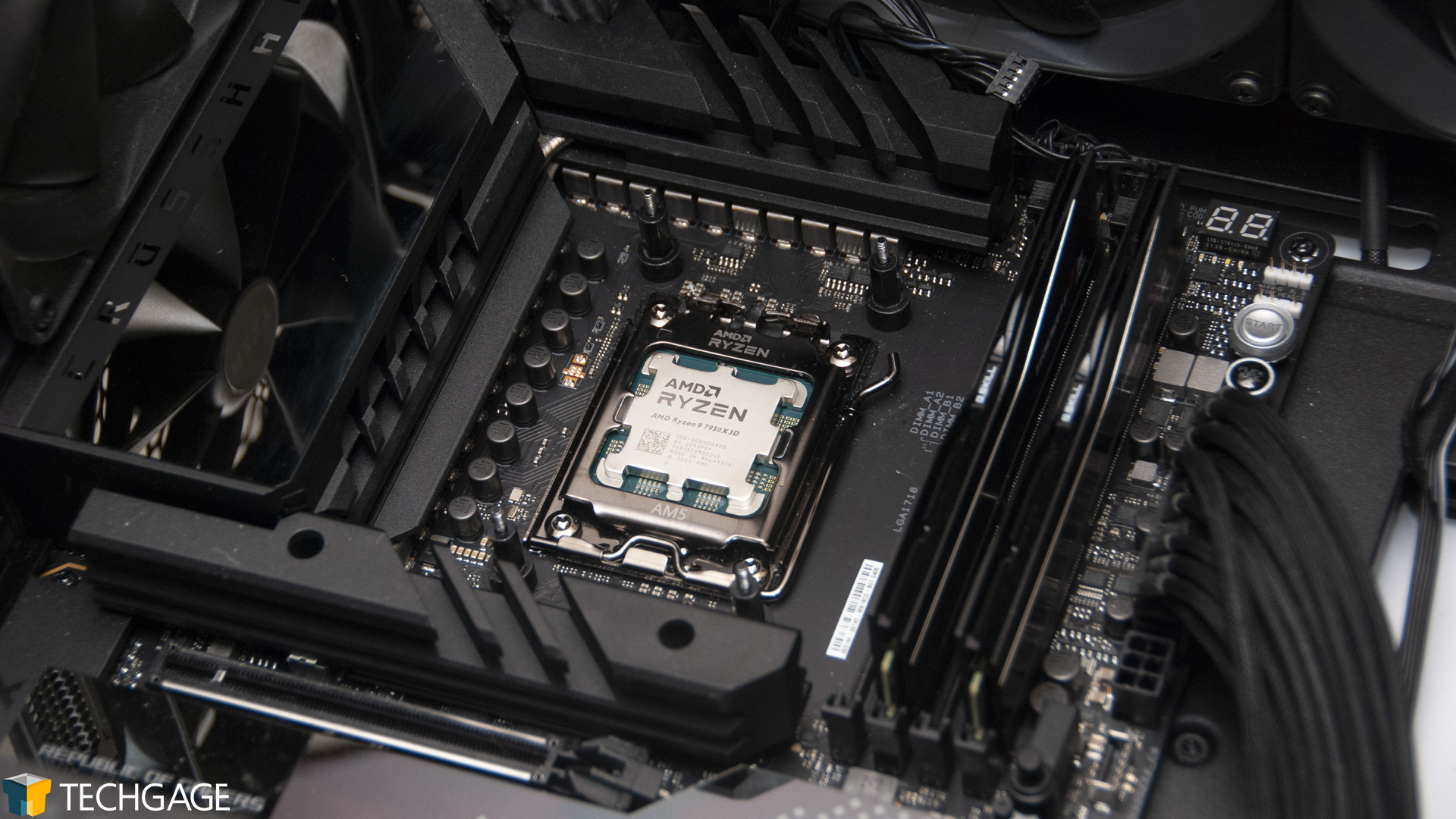- Qualcomm Launches Snapdragon 4 Gen 2 Mobile Platform
- AMD Launches Ryzen PRO 7000 Series Mobile & Desktop Platform
- Intel Launches Sleek Single-Slot Arc Pro A60 Workstation Graphics Card
- NVIDIA Announces Latest Ada Lovelace Additions: GeForce RTX 4060 Ti & RTX 4060
- Maxon Redshift With AMD Radeon GPU Rendering Support Now Available
3D V-Cache Infused Zen 4: AMD Ryzen 9 7950X3D Gaming Review

AMD’s first Zen 4 processors featuring 3D V-Cache technology have landed, and with a focus squarely on gamers, we’ve been eager to see how 3D V-Cache elevates AMD’s Zen 4, and not to mention how it performs against the Intel competition. With the 16-core 7950X3D and thirteen games in-hand, let’s explore what AMD’s latest and greatest gaming CPU can pull off.
Page 4 – CS: GO, Rainbow Six Siege & Final Thoughts
Counter-Strike: Global Offensive
We couldn’t take a look at a CPU that’s laser-focused on gaming and not test out a couple of esports titles. Once again, we turn to the ever-popular Counter-Strike Global Offensive, and below, Tom Clancy’s Rainbow Six Siege. In the past, we used to test CS: GO with a command-line timedemo, but have since moved to using the “Watch” mode, which plays back the scene in real-time, and ultimately seems to deliver more realistic scaling.
Compared to most of the games we’ve tested up to this point, these CS: GO results are a little uninteresting, except for the fact that Intel’s 13th-gen Core chips are the strongest of the bunch. 3D V-Cache offered no benefit here.
4K resolution is the focus of both CPU tests here, as at 1080p, CS: GO performs essentially the same – a GPU like the RTX 4090 laughs a workload like this off.
Tom Clancy’s Rainbow Six Siege
As with CS: GO, we tested Siege at 4K, as its a lighter GPU workload that still shows good scaling across CPUs. We were planning to include 1080p here as well, since there are differences between them (unlike with CS: GO), but it turned out that our five-runs per CPU were not enough; the average frame rate varied too much from run to run. At 4K, scaling isn’t too interesting, either, but somehow, both X3D chips still manage to hit the top.
The next time we test Siege, we’ll likely perform ten runs at 1080p in order to deliver a useful median, as we think the scaling would have been a lot more interesting at that resolution.
Final Thoughts
When AMD released its first 3D V-Cache SKU with the Ryzen 7 5800X3D, it proved that giving games a lot more cache could greatly benefit performance. That’s especially the case at 1080p, but sometimes 1440p, too. It was clear that the 5800X3D wouldn’t be the last 3D V-Cache SKU we saw, but we’re not sure how many would have anticipated three such models being made available this generation.
With all of the game results on this and the previous pages pored over, what do we make of AMD’s Ryzen 9 7950X3D? Being that it bested the rest of the tested lineup in more games than it didn’t, it’s safe to say that it is in fact the fastest gaming processor going. Intel’s Core i9-13900K does well to keep up in many instances, but if you’re looking for the de facto fastest overall, the 7950X3D is it right now.
While the Ryzen 9 7950X3D is a top-notch gaming processor, there are a couple of things to keep in mind. All 3D V-cache chips target gamers, but we’re of the opinion that few hardcore gamers need 16 cores. 12 cores is a little more justifiable, but if you’re strictly a gamer, and don’t do much by way of creator and workstation workloads, the more focused upcoming 7800X3D is probably going to be the best bet (based on all of what we see from the behavior of the last-gen 5800X3D and current-gen 7950X3D).
Who will benefit most from the 7950X3D are gamers who are also creators, or gamers that have a lot going on aside from the game filling their screen. The 7950X3D would allow you to encode a video in the background with less detriment to gameplay than a 7800X3D would, but unless you’re actively multi-tasking games and external workloads like that, those extra cores (and the higher cost of the chip) are not going to benefit you that much. This is one reason we’re really keen on seeing what the 7800X3D will be able to manage.
While not really the focus of this article, one thing that stood out to us was how much AMD’s Zen 4 gains in gaming over Zen 3, even when ignoring 3D V-Cache. In most instances, the current-gen mid-range 8-core 7700X beats out the last-gen top-end 16-core 5950X. As for owners of the 5800X3D, we see no reason that you should feel compelled to upgrade to a modern 3D V-Cache CPU. That chip has held up so well, it’s no wonder both AMD and Intel avoided mentioning it when both launched their respective current-gen architectures.
Support our efforts! With ad revenue at an all-time low for written websites, we're relying more than ever on reader support to help us continue putting so much effort into this type of content. You can support us by becoming a Patron, or by using our Amazon shopping affiliate links listed through our articles. Thanks for your support!








